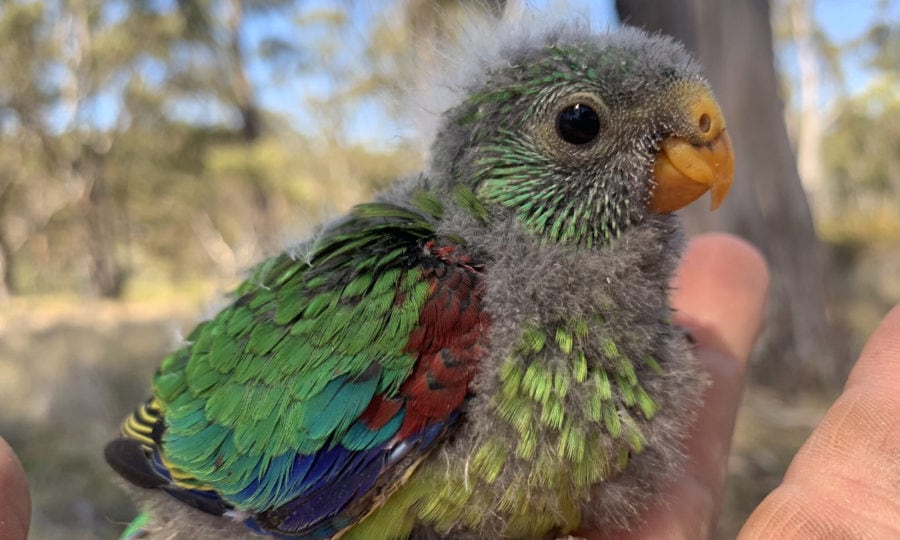Less than 300 swift parrots remain in the wild

Previously thought to be in the thousands, a new study has revealed critically endangered swift parrot populations may consist of just 300 individuals.
Each year, brightly-coloured swift parrots migrate from the mainland to the eucalyptus forests of Tasmania to breed. There, they’re confronted with threats such as predation by invasive species and the ongoing logging of their habitat.
This new estimation is in line with previous research published in 2015 that suggested swift parrot populations would plummet over a 15 year period. “Unfortunately our genetic data supports the results of our earlier research,” says ecologist Dejan Stojanovic, who worked on both papers.
This is the first time genetic analysis of DNA samples was used to calculate the population size of the parrots. “Contrary to decades of expert opinion, the population size of swift parrots is much smaller when evaluated using objective genetic techniques,” Dejan says. “Over-reliance on expert opinion poses inherent risks because experts can have inherent biases.”
This isn’t the first time Dejan has pointed to issues with swift parrot population estimates. In 2013, he implored researchers to climb up trees, rather than counting nests from below, to avoid errors.
“When you climb the tree you realise that of those 20 you spotted from the ground, five are stains in the bark, three are flooded and the rest are occupied by other animals,” he said at the time. “These errors are likely to contribute to poor conservation decisions for cavity-dependent species.”
According to Dejan, the findings from this new study point to the urgent need to stop deforestation in swift parrot habitat. “The tiny population of these birds shows that we’re already on the track for extinction, so unless governments and the logging industry take urgent, meaningful action to arrest their decline, we could lose these birds in our lifetime.”
Research published in 2018, by Dejan and colleague Matthew Webb, found that habitat of swift parrots is being destroyed by logging due to government inaction, specifically the absence of an adequate management plan.
“Currently, it is still perfectly legal to log the habitat of swift parrots, and the result of decades of poor forest management practices is the critically small population revealed by our study,” Dejan says. “I remain hopeful that we can save swift parrots, but this will require political courage by governments that have enabled logging companies to historically mismanage public forests.”
It’s likely the findings will have implications for other critically endangered animals, whose population size is based on expert opinion rather than genetic analysis.
“It’s worth using opportunistically collected DNA samples to estimate population sizes of poorly studied species as this approach is likely to be more reliable and informative than asking an expert their opinion.”

